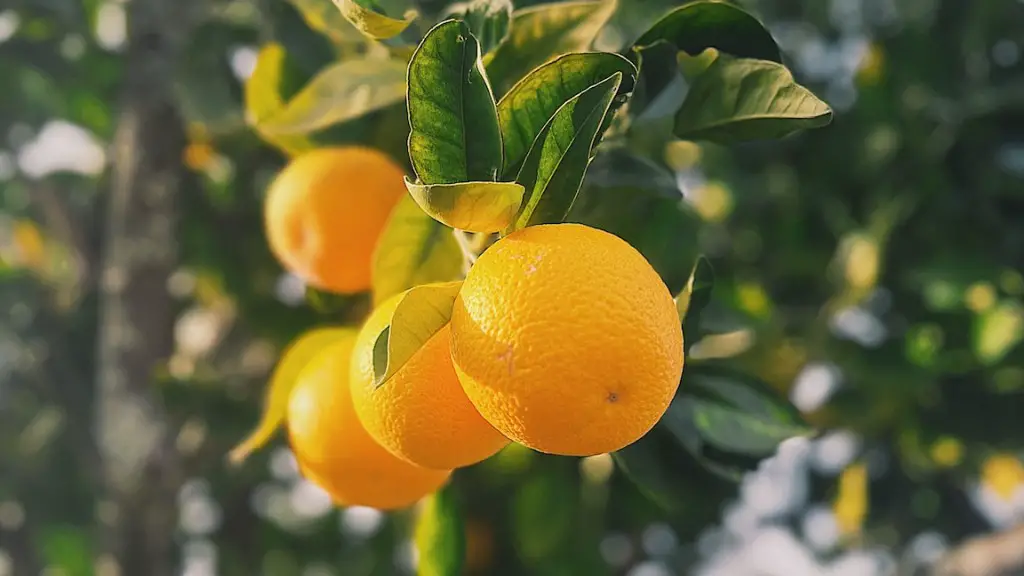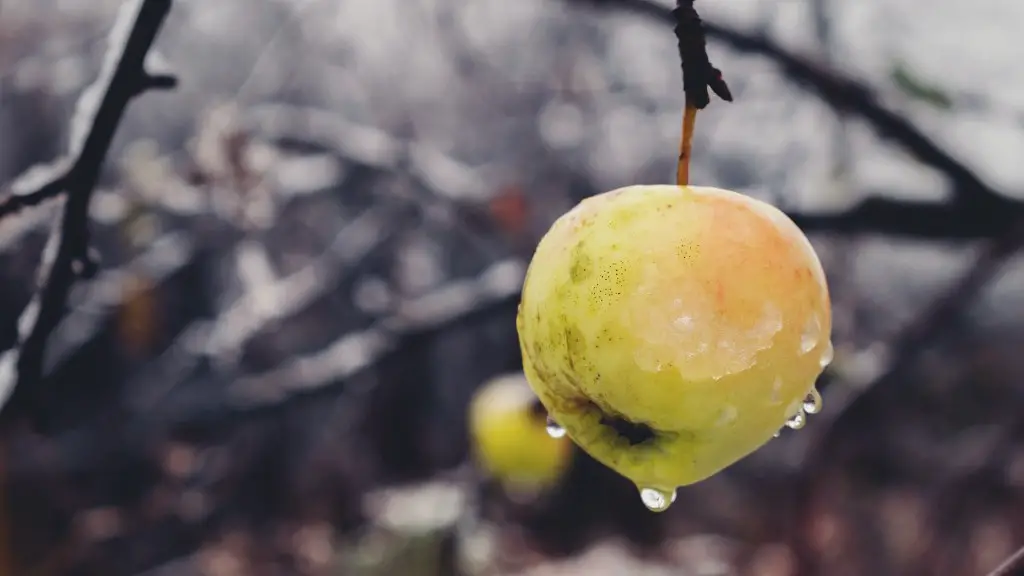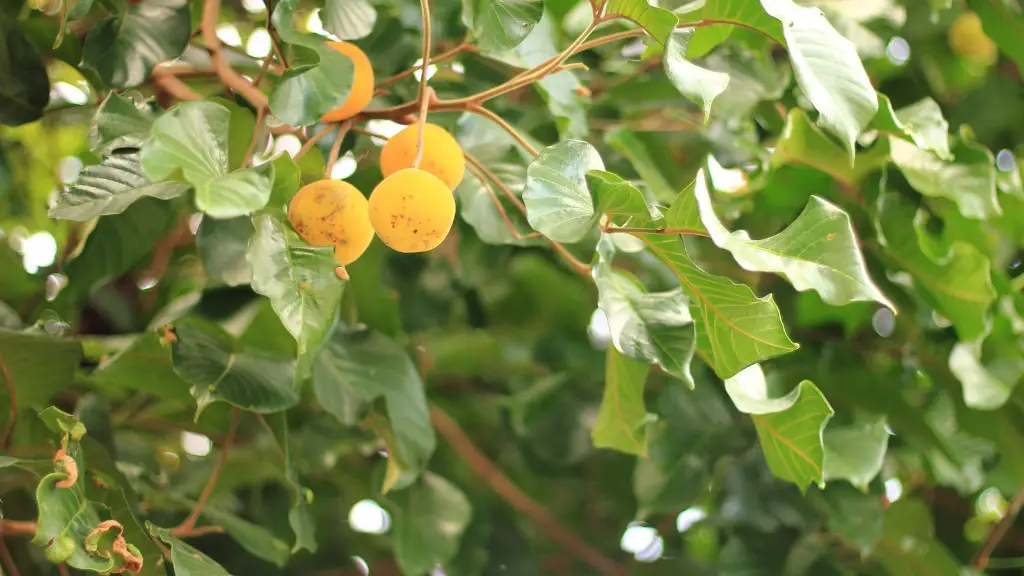To ensure that your lemon tree gets the proper amount of water, follow these tips. First, check the soil around your lemon tree. If it is dry to the touch, it is time to water the tree. Second, water the lemon tree deeply and slowly so that the roots have time to absorb the water. Finally, avoid watering the lemon tree too often as this can lead to root rot.
The best way to water a lemon tree is to water deeply and infrequently. Water the tree once a week, giving it a thorough soaking. Avoid getting water on the leaves, as this can promote fungal growth.
How often should I water my lemon tree?
A watering schedule is important to keeping your lemon trees healthy and happy. Depending on rainfall in your area or your humidity indoors, a lemon tree should be watered once weekly or bi-weekly. If you’re not sure when to water your lemon trees, just check the top 2 inches of soil.
If the soil is wet, it’s best to wait a few days before watering again. This will allow the soil to dry out slightly and prevent the plant from getting too much water.
How can you tell if a lemon tree is overwatered
If the leaves of your lemon tree start to turn yellowish, this can be an early sign of overwatering. The leaves will eventually begin to drop, and the roots will become mushy and black.
Lemon trees are sensitive to over watering, so water your lemon tree only when the top two inches of the soil have dried out. In the summer, lemon trees require more water and should be watered less often in the winter to avoid root rot.
Do lemon trees need misting?
If you have a particularly warm house and you opt to wet the leaves of your plant, it is best to do this either in the early morning or evening.
If you want your indoor lemon tree to perform at its best, it needs to receive close to eight hours of sunlight each day. The more light it gets, the better your results will be. Lemons generally do well in front of unobstructed south- or southwest-facing windows.
Can you water lemon tree with tap water?
Citrus plants are susceptible to both under and over watering. Tap water is generally fine to use, but avoid using softened water as it can contain sodium salts. For every citrus plant killed by under watering, approximately 200 are killed by over watering.
One of the reasons why your lemon tree leaves could be turning yellow is a lack of magnesium in the soil. To correct magnesium deficiency, mix 30g of Epsom Salts per litre of water (approximately 2 tablespoons), per tree.
Why do leaves turn yellow on lemon tree
Lemon trees are a type of citrus tree that thrive in warm, subtropical climates. They can also grow in cooler climates if they are sheltered from cold winds and cold winter conditions. When the tree is cold, its roots are unable to absorb enough nutrients to keep the leaves green. As a result, the leaves turn yellow.
Lemon trees are susceptible to a variety of problems, including citrus canker, sooty mold, botrytis blight, anthracnose, and lemon scab. To prevent these problems, it is important to care for your lemon tree properly.
How do you care for a potted lemon tree?
Yes, the trick is to just recreate nature. Water it really well, let it drain really well, and let it dry.
If you live in an area with high temperatures, you’ll need to water your lemon tree more often than once a week. For the first year or two, water your lemon tree about once a week. In the winter, you can decrease watering to every two weeks. In the heat of summer, you’ll need to increase watering to 2-3 times per week.
What’s wrong with lemon trees in pots
Lemon trees are a popular choice for many homeowners because of their fragrant blossoms and delicious fruit. However, lemon trees in containers are more vulnerable to the cold and drought than those in the ground. A lemon tree in a container has a hardiness zone that is one zone higher than the USDA recommended zone. This means that it can only take mild frost and cold. If the temperatures get too low, the tree will not be able to produce fruit.
Citrus trees are sensitive to both cold and heat, and their leaves can curl in extreme temperatures. Some insect infestations, such as scale, mealy bug, mites or aphids, can also cause leaves to curl. Over-watering can also be a problem. Adjust your watering schedule depending on the weather conditions.
How many gallons of water does a lemon tree need?
The findings from the University of Arizona suggest that mature citrus trees require a lot of water to stay healthy. In the winter, they may need up to 17 gallons of water per day, and in the summer, they may need up to 135 gallons of water per day. This research is important for understanding how to care for citrus trees and keeping them healthy.
Lemon trees are a type of citrus tree, and as such require full sunlight for adequate growth. While lemon trees can tolerate a range of soils, including poor soil, most prefer well-drained, slightly acidic soil. Lemon trees should be set slightly higher than ground level to allow for proper drainage.
Why is my lemon tree leaves turning yellow and falling off
If you see yellow leaves or chlorosis on your citrus tree, it is likely due to over watering or a nutrient deficiency. Citrus trees need regular water, especially in warm months, but too much water can leach nutrients from the soil and cause root rot. If the roots are damaged, they will be unable to take up the nutrients the plant needs.
To provide the best possible care for your citrus trees, move them to a south-facing window or bright room where they will receive maximum light. An ideal temperature range for them is between 55 and 68 degrees Fahrenheit. Keep them away from heating vents or drafty areas. Citrus trees require humidity, so you should provide a supplemental form of humidity.
Warp Up
To water a lemon tree, first check the soil to see if it is dry. If the soil is dry, then water the tree until the soil is moist. Be sure to not over water the tree, as this can lead to root rot.
The best way to water a lemon tree is to do it slowly and deeply, so that the water penetrates the roots. Water the tree once a week, but more often during hot, dry weather.




